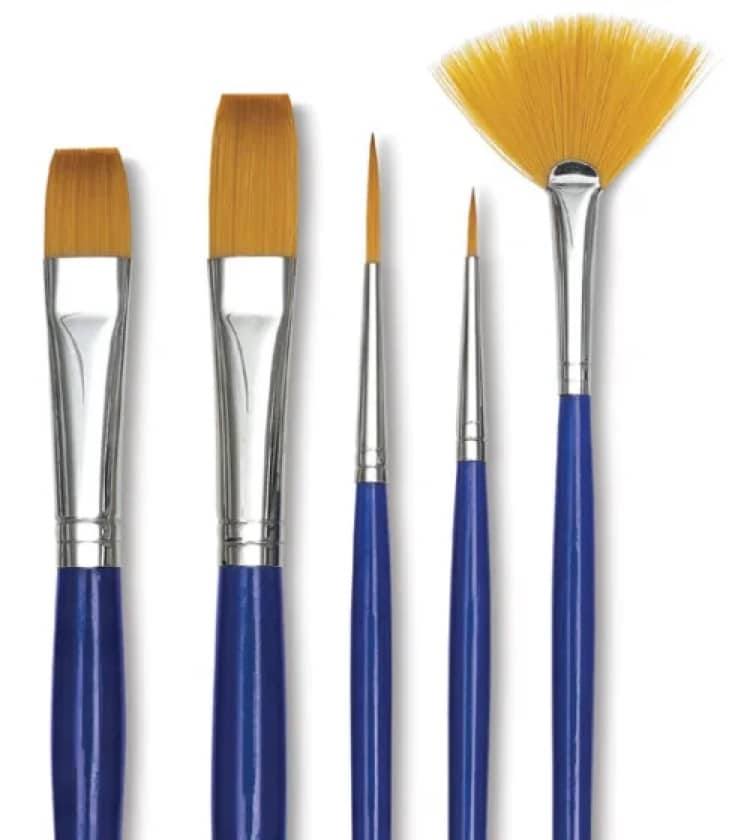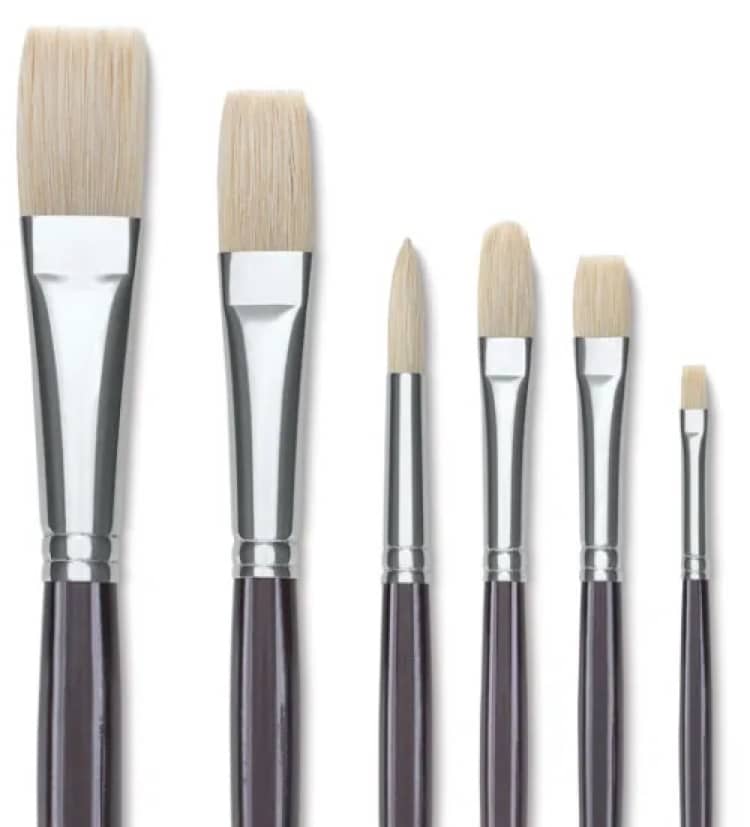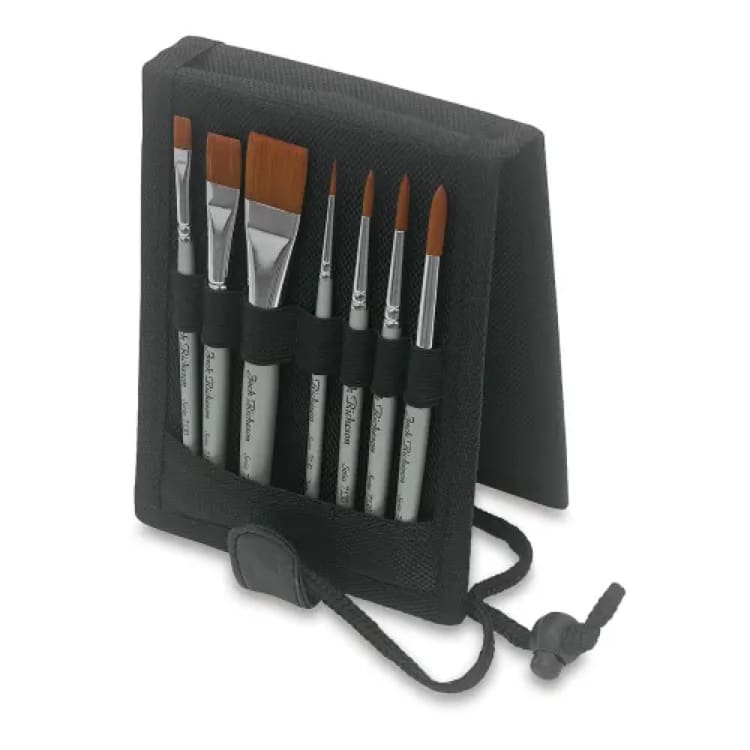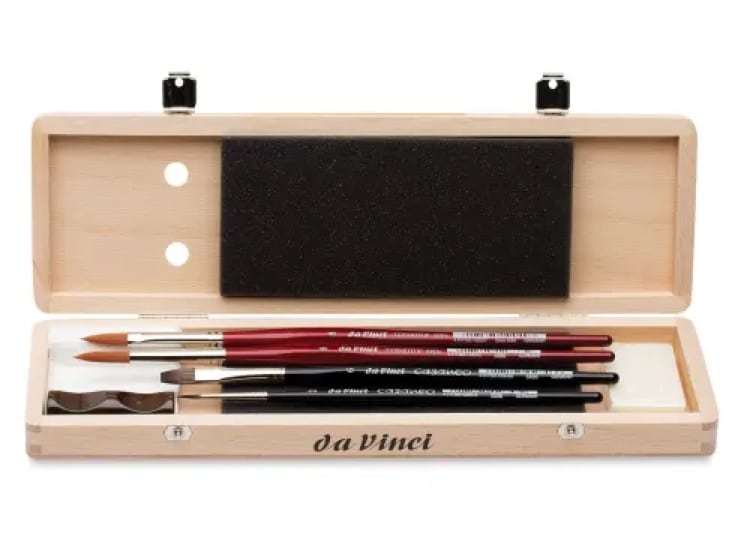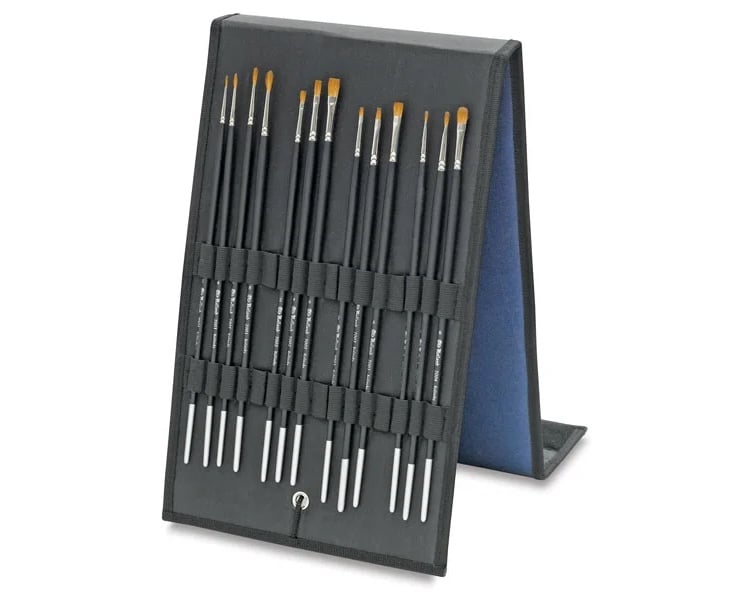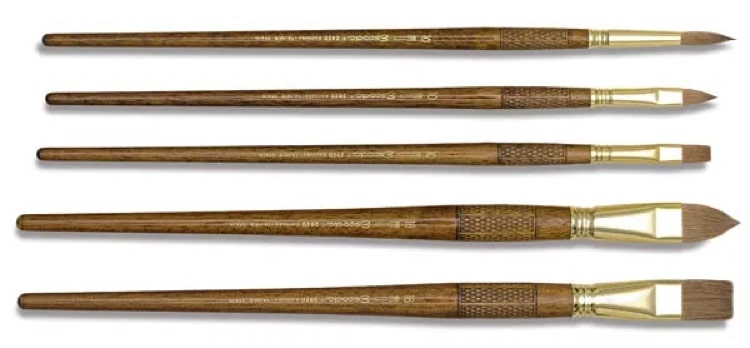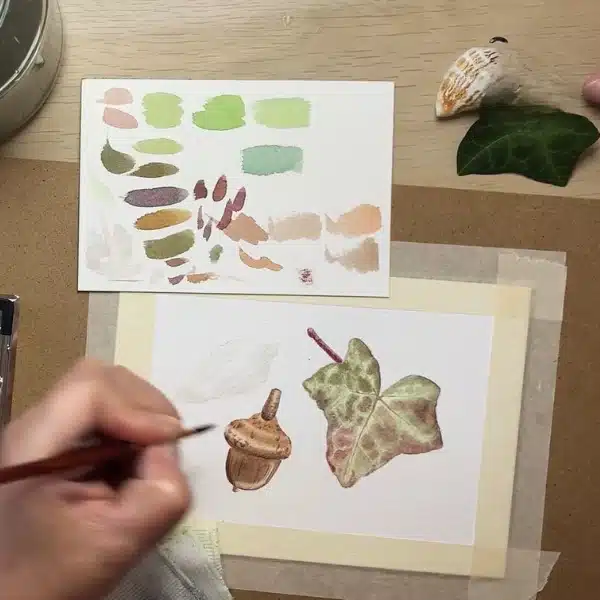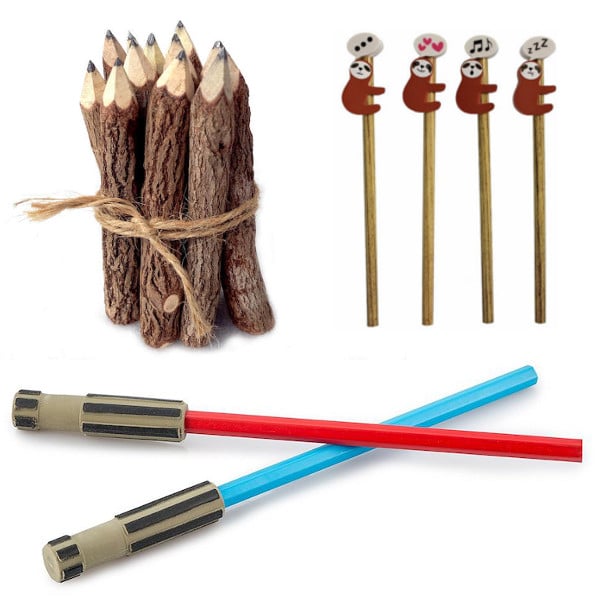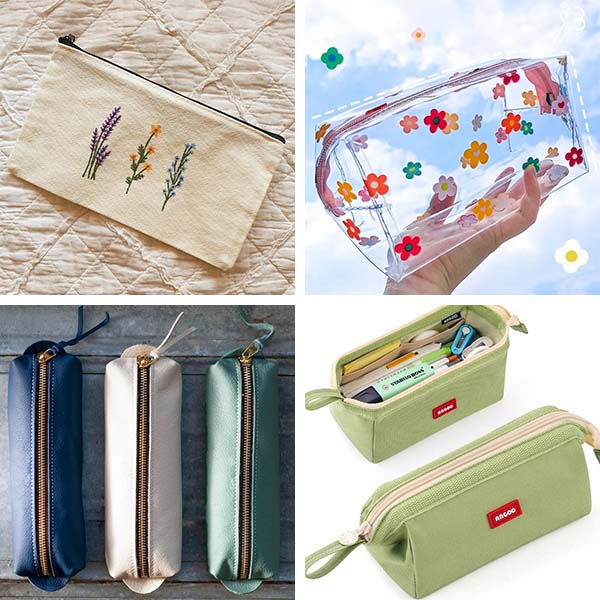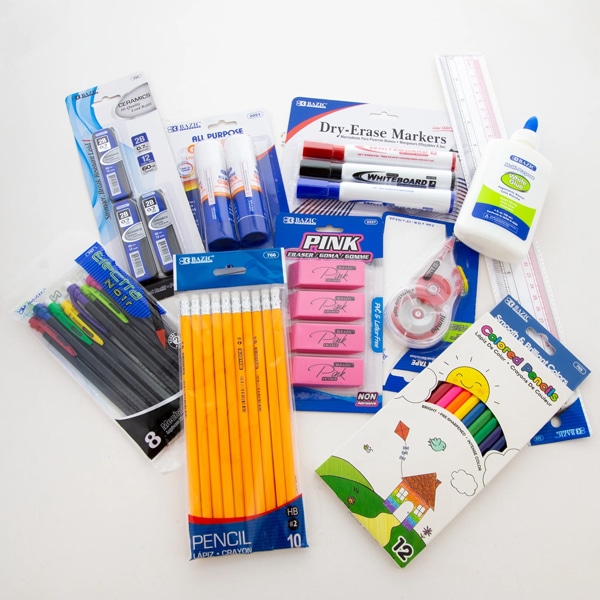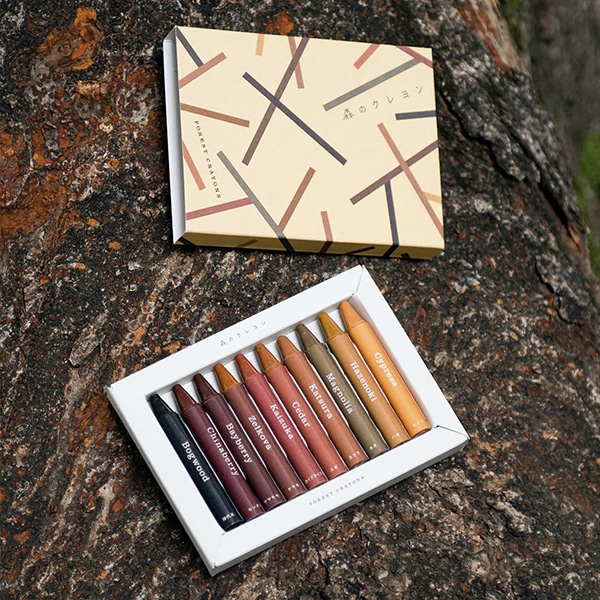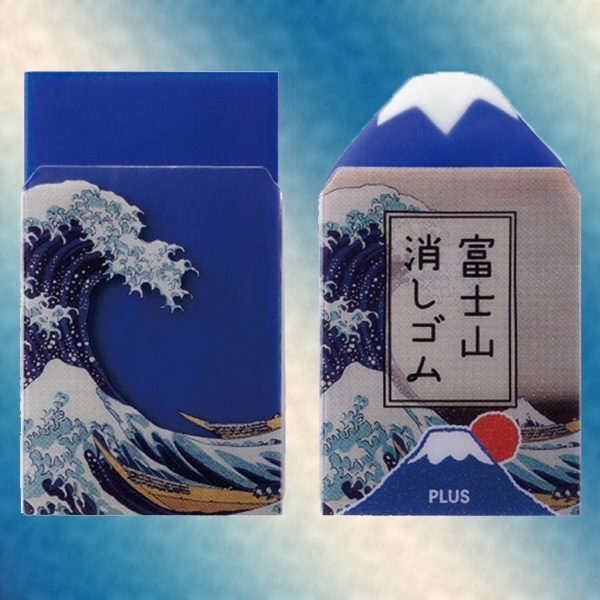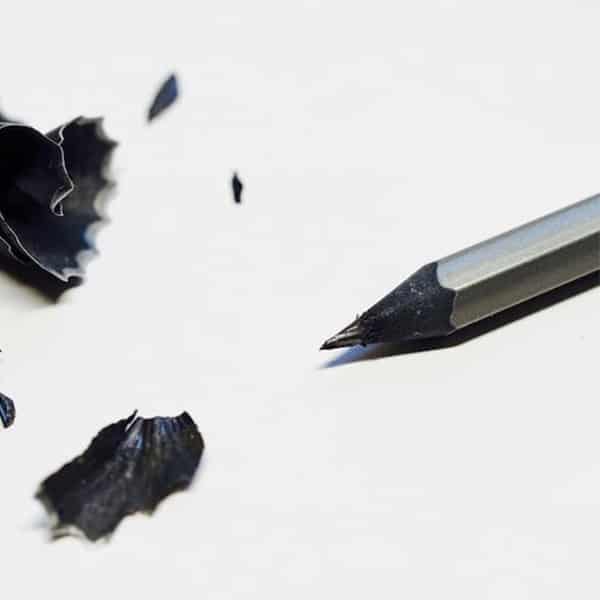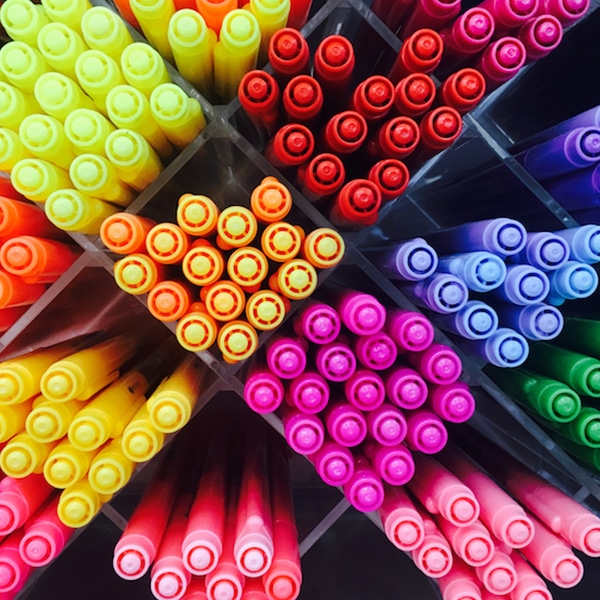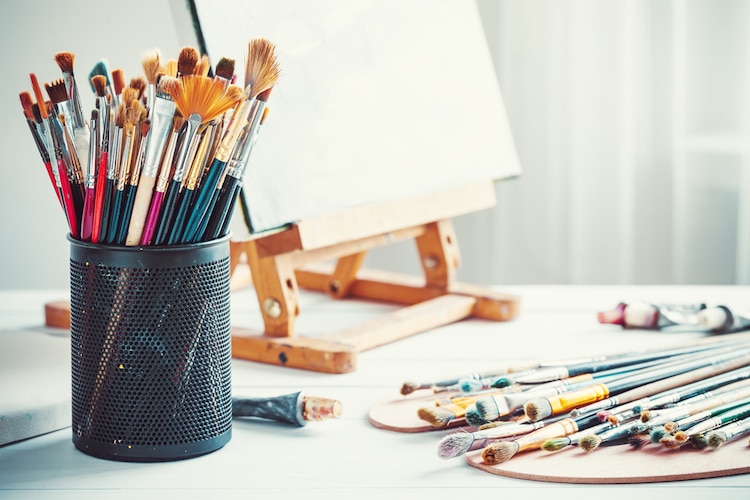
Photo: Stock Photos from Chamille White/Shutterstock
This post may contain affiliate links. If you make a purchase, My Modern Met may earn an affiliate commission. Please read our disclosure for more info.
For most painters, the perfect paintbrush is an essential tool that helps bring their work to life. Whether you are working with oil, acrylic, or watercolor paints, having the correct brush will help you execute your creative vision with ease.
But with so many quality brushes on the market, it can be difficult to understand where to start. From different shapes and sizes to synthetic or natural bristles, there are a lot of choices to be made. However, once you get a handle on the different usages of these brushes, you'll be able to expertly make your selection.
Since every good quality brush comes with its pros and cons, we've broken down some of the common types of paintbrushes that artists use, as well as put together our favorite paintbrush sets to let you experiment and discover what helps you achieve professional-looking results. Whether you are looking for durability, comfort, affordability, or a combination of the three, we have some art supplies for you to try out. Who knows? A different brush might be just the thing you need to reinvigorate your creative process.
Brush Shape
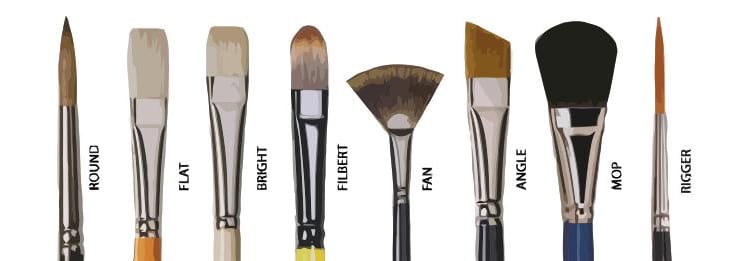
Photo: Vinegartom Image via Wikipedia
There are many different paintbrush shapes to select from. What you decide will depend not only on your medium but also on the painting techniques that you use. Some brushes work better with heavy body paints as opposed to more fluid pigments and others are the opposite. There are brushes that will help create fine lines and others that are used to provide texture. To understand what will work for you, let’s take a look at some of the most common brush shapes.
- Round – Ideal for adding fine detail, round brushes are a close gathering of bristles with a round or pointed tip. Round brushes are ideal for sketching and filling in smaller areas, as well as linework. By changing the pressure on the brush, it’s easy to vary from thin to thick lines. Round brushes work better with thinner paints.
- Flat – Versatile with long or medium bristles, flat brushes can be used for everything from filling in large spaces to creating bold strokes, impasto, or washes. By using the edge of the brush, it’s also possible to make fine lines.
- Bright – A bright brush is a short-bristled flat brush with edges that curve slightly toward the center. With shorter and stiffer bristles than a flat brush, these paintbrushes work well with heavy body paints when doing impasto and with thin paints to help drive the pigment into the canvas. However, they aren't good for wet on wet, as their stiff bristles can pull up the underlayer of paint.
- Filbert – This flat brush with domed edges can be either medium or long-bristled. Filbert brushes take the best of round and flat brushes, meaning they can be used for detail as well as coverage.
- Fan – The splayed out bristles of a fan brush can help create interesting textural effects on trees, clouds, and other natural elements. Natural bristles make this brush particularly effective for blending, feathering, and smoothing, while synthetic bristles work well for texture.
- Angle – Angle brushes are flat with—you guessed it—an angled edge. They are especially useful for making curved lines and filling in corners where the tip can easily reach. But they also come in handy for applying paint to larger areas, making them another versatile tool.
- Mop – Mop brushes come in larger sizes and have soft bristles with a rounded edge. They’re especially useful for watercolorists, as they are wonderful at creating washes of color. For those that work in layers, mop brushes can be used to apply a thin glaze of color over layers that are drying.
- Rigger – These long, thin round brushes work well with fluid paint. Originally used to paint the rigging of ships in paintings, they are the fine liners of the brush world. Rigger brushes, also known as liner brushes, make long continuous strokes that are useful for painting fine details like branches, as well as for lettering and calligraphy.
Types of Bristles
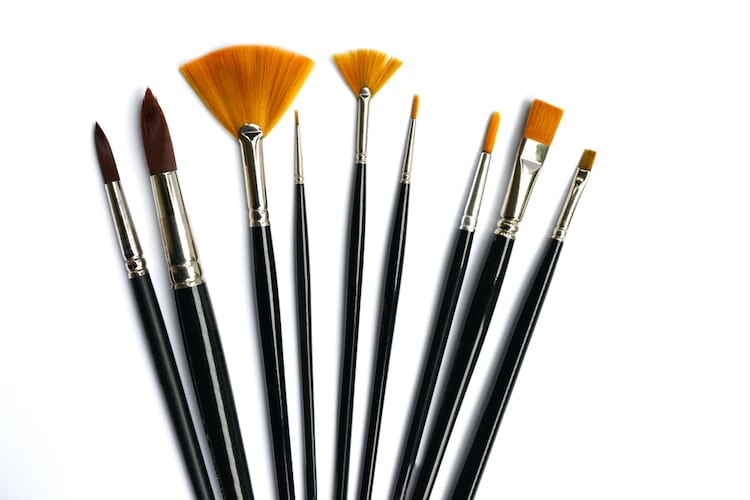
Photo: Stock Photos from Cafe Racer/Shutterstock
Bristles come in different lengths—long, medium, and short—depending on the shape of the brush and its use. In general, medium or long bristles work well with fluid paints and, depending on the shape, can be used for fine detail or coverage. Short bristles can be particularly useful when employing techniques like stippling or if you want complete control over your brushstrokes.
No matter the length, bristles are made of different materials—natural or synthetic.
Natural brushes are divided into two categories, soft hair and hog bristles. At the high end, soft hair brushes are made from sable, while camel hair brushes are on the lower end, but aren’t actually made from a camel. Most often these bristles are made from ox, pony, goat, mongoose, or badger. Instead, hog bristle is stiffer, sturdier, and can hold a lot of paint.
Synthetic brushes are typically made of nylon or polyester. Not only are these more cost-effective, but they are easier to clean. As a downside, they don’t soak up quite as much pigment as natural brushes and aren’t quite as soft.
Best Paintbrush Sets for Artists
Now that you have a handle on the types of paintbrushes available, let’s take a look at the best paintbrush sets to help you get started painting in style.
Best Student Grade Paintbrushes
Affordable Acrylic Paintbrushes
Best All-Purpose Synthetic Paintbrushes
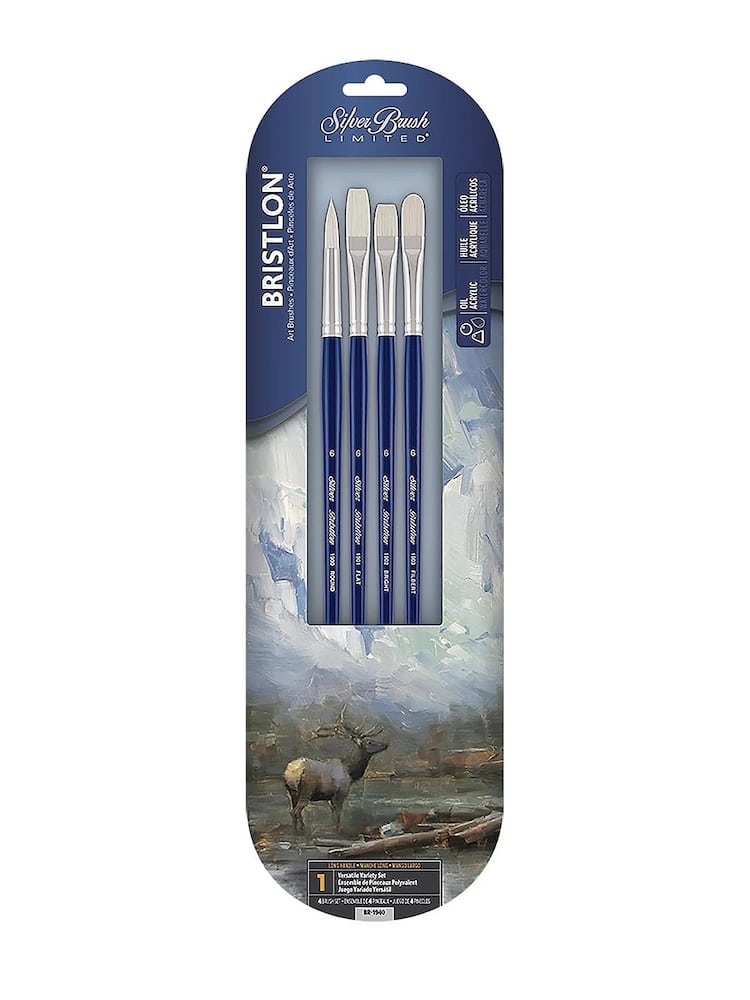
Silver | $63.22
Best Hog Bristle Paintbrush Set
Best Oil Paintbrushes
Best Value Pack of Craft Brushes

Blick Essentials, Set of 25 | $11.19
Best Travel Paintbrush Set
Best Luxury Watercolor Brush Set
Best Sable Paintbrush Set
Best Handcrafted Natural Brushes
This article has been edited and updated.
Related Articles:
11 Easy Acrylic Painting Techniques for Artists of All Levels
Top 8 Oil Painting Techniques All Beginners and Professionals Should Know
9 Watercolor Mediums That Will Transform the Way You Use the Paint
9 of the Best Paint Palettes for Mixing Your Favorite Types of Pigments
